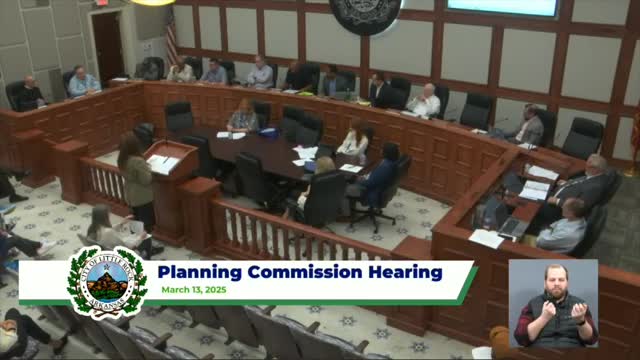Commissioners debate parking lot necessity in Little Rock's Hillcrest walkable neighborhood
March 13, 2025 | Little Rock City, Pulaski County, Arkansas
This article was created by AI summarizing key points discussed. AI makes mistakes, so for full details and context, please refer to the video of the full meeting. Please report any errors so we can fix them. Report an error »

During the recent Planning Commission meeting in Little Rock, a lively discussion emerged regarding the balance between residential and commercial spaces in West Little Rock. The conversation highlighted the importance of maintaining walkable neighborhoods, with several commissioners expressing their views on the need for accessible community spaces.
One commissioner emphasized the current landscape of West Little Rock, noting the stark contrast between large blocks of commercial properties and expansive residential areas. This imbalance, they argued, disrupts the neighborhood fabric that thrives on coexistence among businesses, schools, and churches. The commissioner voiced support for a proposal aimed at enhancing this balance, suggesting that a more integrated approach would benefit the community.
Another commissioner countered this perspective, advocating for the preservation of walkable neighborhoods. They argued that residents living in such areas should not require parking lots, as they can easily walk to their destinations, including churches and local businesses. This viewpoint underscored the belief that walkability is essential for fostering community connections and reducing reliance on vehicles.
The discussion also touched on the existing parking facilities available in the neighborhood, with the commissioner asserting that ample parking already exists for those who may need it, particularly for visitors from outside the area. The emphasis was placed on keeping Hillcrest, a noted walkable neighborhood, free from unnecessary parking expansions that could detract from its charm and accessibility.
As the meeting concluded, the commissioners expressed their commitment to working collaboratively to enhance Little Rock's community spaces. The dialogue reflected a broader goal of creating a more interconnected and pedestrian-friendly environment, which many residents value in their daily lives. The Planning Commission's ongoing discussions will continue to shape the future of Little Rock, ensuring that community needs remain at the forefront of urban planning efforts.
One commissioner emphasized the current landscape of West Little Rock, noting the stark contrast between large blocks of commercial properties and expansive residential areas. This imbalance, they argued, disrupts the neighborhood fabric that thrives on coexistence among businesses, schools, and churches. The commissioner voiced support for a proposal aimed at enhancing this balance, suggesting that a more integrated approach would benefit the community.
Another commissioner countered this perspective, advocating for the preservation of walkable neighborhoods. They argued that residents living in such areas should not require parking lots, as they can easily walk to their destinations, including churches and local businesses. This viewpoint underscored the belief that walkability is essential for fostering community connections and reducing reliance on vehicles.
The discussion also touched on the existing parking facilities available in the neighborhood, with the commissioner asserting that ample parking already exists for those who may need it, particularly for visitors from outside the area. The emphasis was placed on keeping Hillcrest, a noted walkable neighborhood, free from unnecessary parking expansions that could detract from its charm and accessibility.
As the meeting concluded, the commissioners expressed their commitment to working collaboratively to enhance Little Rock's community spaces. The dialogue reflected a broader goal of creating a more interconnected and pedestrian-friendly environment, which many residents value in their daily lives. The Planning Commission's ongoing discussions will continue to shape the future of Little Rock, ensuring that community needs remain at the forefront of urban planning efforts.
View full meeting
This article is based on a recent meeting—watch the full video and explore the complete transcript for deeper insights into the discussion.
View full meeting
